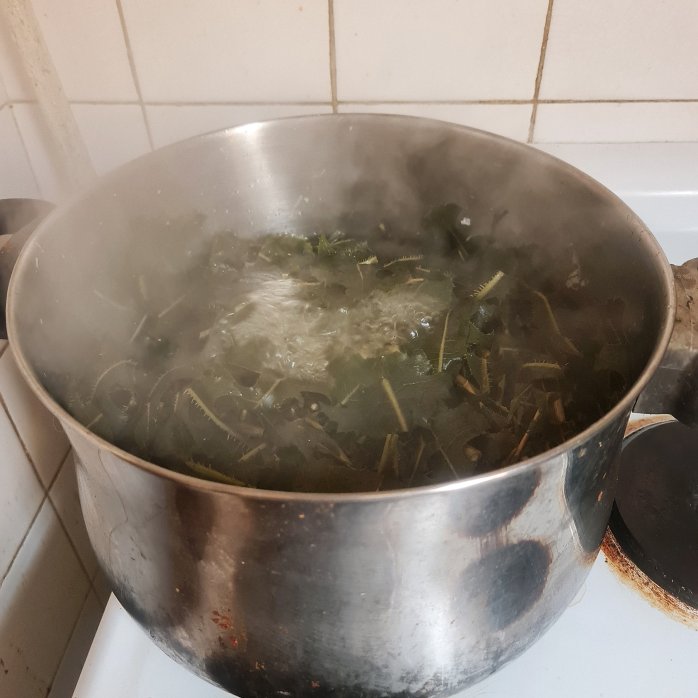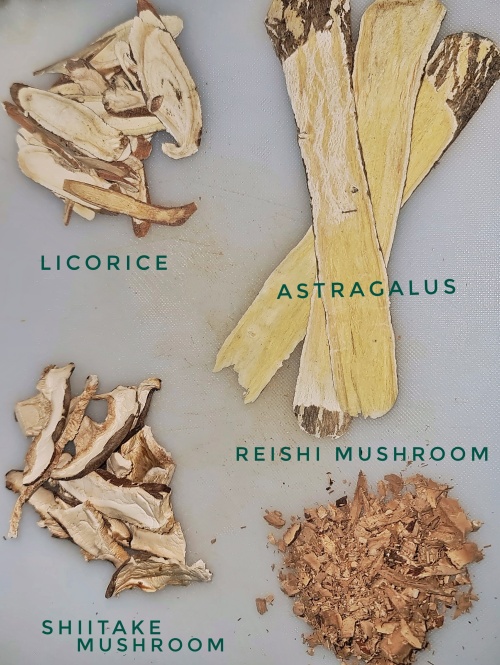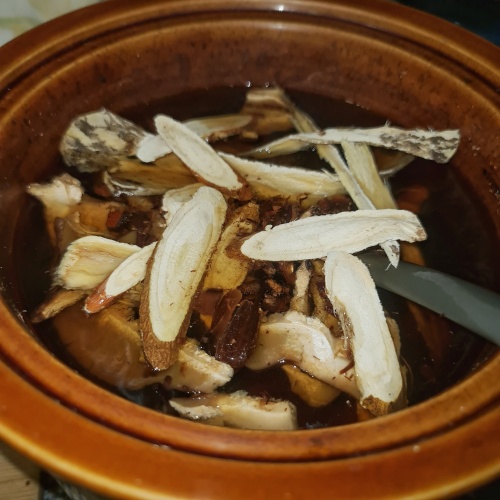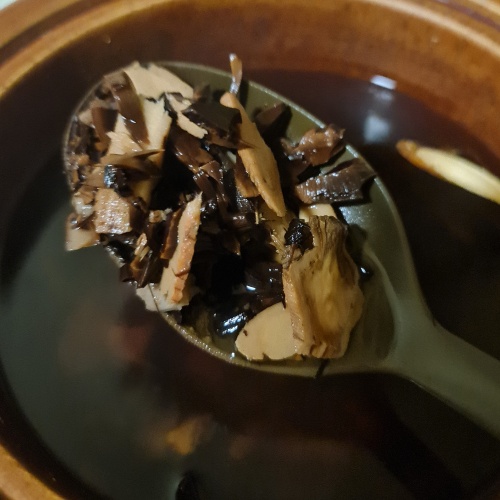
Decoctions are heavy duty extracts but don’t worry, they’re easily made in your kitchen.
Decoctions are a great way to extract useful. goodies from hard, woody material like dried rhizomes, bark, dried berries and seeds. They’re the premiere technique for extracting some of the goodies in dried mushrooms such as Reishi and Shiitake. They’re not very good for aromatic herbs such as mints, lemon balm, and catnip because nearly all of the aromatic compounds that make them so beneficial are driven off during the decoction process. Horses for courses, as they say.
A decoction is also really the second stage of the double extraction method of making herbal tinctures.

How to decoct
To decoct, you only need a covered pot, water, and herbs. A decoction is more like cooking than any of the other herbal remedy-making methods.
You decoct with the pot uncovered, though I like to leave the cover partially on so that some of the steam gets caught and recirculated before being lost later. If you have a cover with a small hole in it, as is common now, use that instead.
There’s 2 ways to make a decoction –
Dry herb decoction – Use 30 – 60 grams of dried herb to 1 litre of water, bring to a boil and simmer until water is reduced to a quarter. You can use more herbs if you want a super strong decoction, but this amount will do for us mere mortals.
Fresh herb decoction – cover 300 grams of fresh herb with 1 litre of water. Bring it to a boil and simmer until 25% of the water is gone.
After simmering the liquid down to the required strength, measure the volume, then subtract that volume from 1 litre. Wash the marc with the resulting amount of water to get to more of the remaining constituents in the marc. Press or wring out the marc, and the finished product will be 1 litre of pretty well fully extracted herbal goodness.
Let your decoction cool, then strain, filter, drink, or store. If you make a lot and want to store it in your refrigerator. Don’t make too much at once unless you’re going to use it; it will go off after a few days (less in the hot weather). It’ll store for about 3 days.
An alternative way to decoct
My favourite way to make some decoctions is to make them in a slow cooker or crock pot.

Just put your ingredients in the pot, put it on high and leave it. Use the low setting if your slow cooker makes your water boil on the high setting. Low and slow is the trick here.
I leave it to brew, covered, overnight for a great, hot brew in the morning. Enough steam escapes over that time to reduce the volume of liquid quite a bit.
This is my favourite technique for decocting, and it is especially good for dried fungi such as Reishi, Shiitake and Cordyceps that require a lot of heat to break down their super tough cell walls to get access to beneficial compounds that can be extracted in water. It’s also a good first stage for a double extraction of those mushroom materials because it allows the alcohol into the cells to extract the alcohol-soluble compounds. Fungi have both water-soluble and alcohol-soluble goodies that must be extracted separately. I’ll do a full page on mushroom extraction soon, so keep an eye out for that!

Using your decoction
You can use a hot (fresh or reheated) or cold decoction. I can’t resist a sip or two straight from the pot when it’s nearly finished, especially in the cold weather!
A good starting point is 30ml in a glass of water, but you can really go to town with decoctions. You can have them straight or diluted with good-quality water. Take your time and start very diluted, then build up to what you like.
